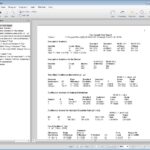A 7-year study compared outcomes in study eyes (treated with monthly ranibizumab for 2 years) versus fellow eyes (initially untreated) in age-related macular degeneration (AMD) patients. This multicenter cohort study, a secondary analysis of the ANCHOR, MARINA, and HORIZON trials, evaluated 65 participants who received ranibizumab. The study focused on visual acuity changes and macular atrophy (MA) progression.
Seven-Year Outcomes Show Differences in AMD Treatment
Fellow eyes that developed exudative AMD received an average of 7.3 anti-VEGF injections over 3.4 years after the initial 2-year study period. This lower treatment frequency in fellow eyes is a key factor in understanding the 7-year results. The primary objective was to compare visual outcomes and MA area between the study and fellow eyes after seven years.
Visual Acuity Comparison after Seven Years
In the subgroup of patients (35%) presenting with bilateral exudative AMD at baseline, 82% demonstrated superior visual acuity in the study eye at the 7-year mark. Mean final visual acuity was significantly better in study eyes (54.7 letters) compared to fellow eyes (27.3 letters), highlighting the long-term benefits of early, intensive treatment.
Macular Atrophy Assessment at Year Seven
The study also assessed the severity of MA, a crucial factor in AMD progression. In 88% of patients with bilateral exudative AMD at baseline, study eyes exhibited less severe MA compared to fellow eyes at year 7 (mean area 2.8 mm² vs. 5.8 mm² respectively). This difference underscores the potential for early intervention with ranibizumab to mitigate MA progression.
Correlation Between Macular Atrophy and Visual Outcomes
A strong correlation was observed between final visual acuity in fellow eyes and MA severity. Greater MA area was associated with poorer visual outcomes. The difference in vision between the two eyes in individual patients directly corresponded to the asymmetry in MA severity, further emphasizing the impact of MA on vision.
Conclusion: Impact of Early and Intensive Treatment in AMD
This 7-year analysis reveals that fellow eyes receiving less frequent anti-VEGF treatment remained susceptible to vision decline and MA progression. Early and intensive ranibizumab treatment in study eyes resulted in significantly better visual acuity and less severe MA at year 7 compared to fellow eyes. These findings emphasize the importance of early and consistent treatment in managing exudative AMD and preserving long-term visual function. While MA correlated with visual outcomes and inter-eye vision differences, it was not attributed to the high-frequency ranibizumab therapy. Further research is needed to explore optimal long-term treatment strategies for AMD.
